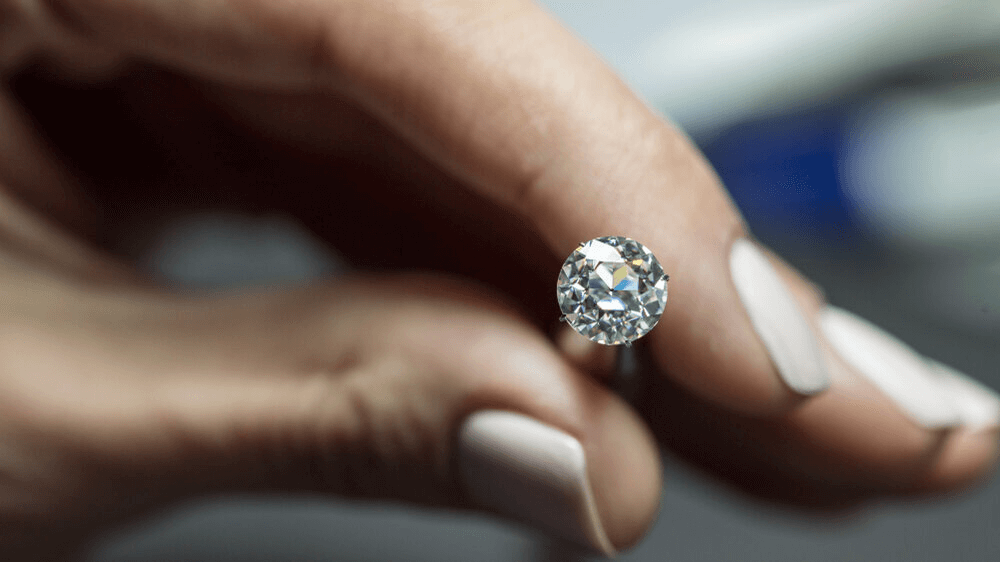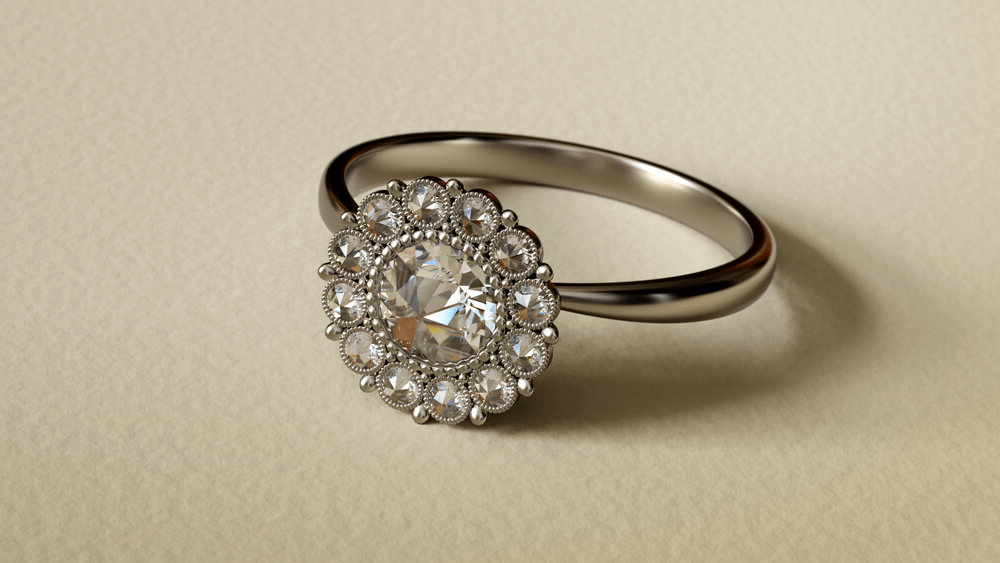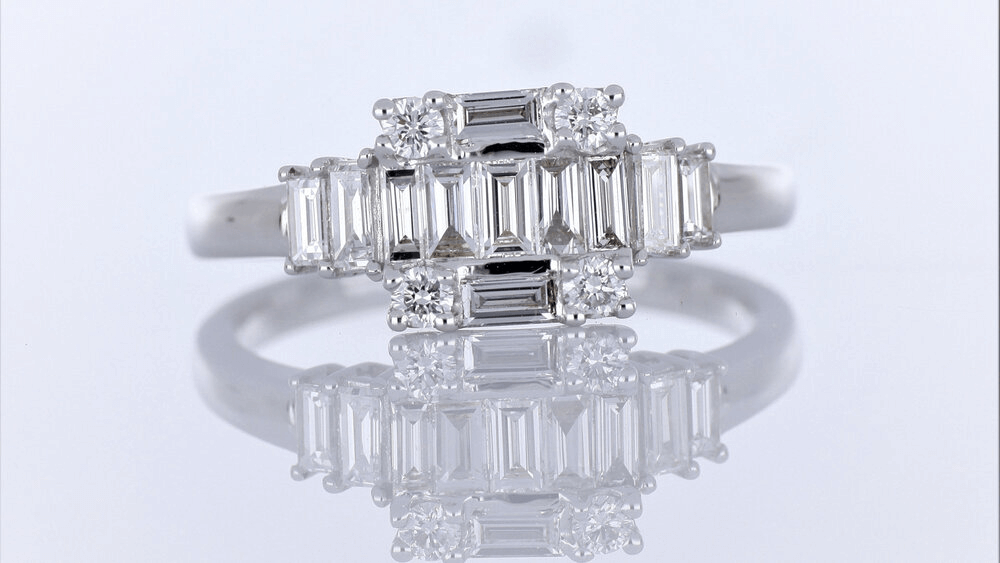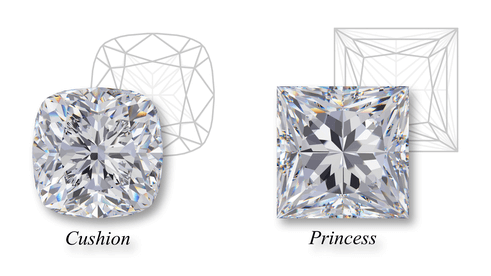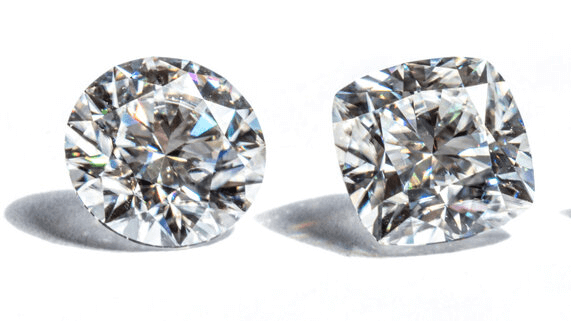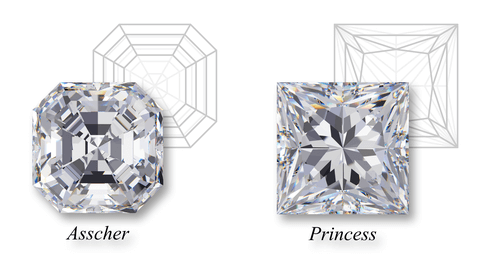Crown of Light Diamonds: Trendy Treasure or Trap

By Gary A.

Edited by Olivia H.
Published Aug 13, 2024
Edited on Mar 31, 2025
Choosing one of the unique diamond shapes can be a great way to make a special statement with your engagement. Here are some left-field ideas…

Navigate this guide:
- 10 Quick Tips for Buying an Engagement Ring with a unique diamond cut
- The Enigma of Diamond Cuts
- The Most Unique Diamond Shapes on the Planet
- Our Expert Take
- 10 Frequently Asked Questions
Before we dive deeper into the specifics, here are some practical tips to help guide your decision-making process:
10 Quick Tips for Buying an Engagement Ring with a Unique Diamond Cut
Understanding the 4Cs
- Cut: The Key to Brilliance
- Pay special attention to the cut, especially with unique diamonds like the Crown of Light, which boasts a 90-faceted cut for unparalleled sparkle. The cut’s quality directly impacts the diamond’s ability to reflect light, making it a critical factor in choosing any diamond, including the ASHOKA, Portrait Cut, Hexagon, Trillion Cut, and Leo Diamond.
- Clarity and Color: Balancing Perfection and Hue
- Clarity and color play significant roles in a diamond’s appearance. For transparent cuts like the Portrait Cut, higher clarity is crucial due to its visible nature. Color preference can vary; some may prefer the icy look of a colorless diamond, while others might appreciate the warmth of a slight hue, especially in designs like the hexagon diamond, where unique characteristics stand out.
- Carat Weight: Size vs. Quality
- Consider the balance between size and quality. Larger diamonds, like those in the Trillion Cut or Leo Diamond range, make bold statements but ensure the overall quality doesn’t suffer. Remember, a well-cut, brilliant diamond will often appear larger and more striking.
Examining Symmetry and Shape
- Symmetry in Unique Cuts
- For diamonds with distinctive shapes such as the hexagon or ASHOKA Diamond, symmetry is paramount. Uneven sides or misaligned angles can detract from the stone’s beauty and brilliance. Ensure the diamond’s shape is precise and well-defined.
Protective Settings and Durability
- Choosing the Right Setting
- The setting not only enhances the diamond’s beauty but also protects it. For diamonds with sharp edges like the Trillion Cut or the Hexagon Diamond, consider settings that safeguard these points, such as bezel or V-shaped prongs, to prevent chipping.
Certification and Verification
- Insist on Proper Documentation
- A reputable certification confirms the diamond’s authenticity and qualities. It’s essential for all diamonds, particularly those with specialized cuts like the Crown of Light or the Leo Diamond, to ensure you’re getting the quality you pay for.
Understanding Price and Value
- Assessing Price Against Quality
- Unique diamonds like the ASHOKA or the Crown of Light might carry a premium due to their rarity and cutting complexity. Ensure the price aligns with the diamond’s intrinsic qualities and market value, considering its cut, clarity, color, and carat weight.
- Consider the Ring’s Wearability:
- For active lifestyles, ensure the setting protects the diamond well. Unique cuts like the hexagon or trillion may require custom settings to prevent snagging and ensure the edges are well-protected.
- Maximize Your Budget with Smart Choices:
- Consider a slightly lower color or clarity grade that still looks great to the naked eye. For example, a VS2 clarity diamond may look identical to a VVS1 clarity diamond without magnification but at a significantly lower cost.
- Embrace the Uniqueness of Each Cut:
- Each diamond shape, from the Crown of Light to the ASHOKA, has unique characteristics. Embrace these differences and choose a cut that resonates with your personal style and the symbolic meaning you wish to convey.
Now that you’ve got these practical tips, use Jeweler AI below to find the perfect engagement ring that suits your style and budget:
The Enigma of Diamond Cuts
The world of diamond cuts extends far beyond the classic shapes commonly seen in jewelry stores. While round brilliants and princess cuts dominate the market, a fascinating array of unique cuts exists for those willing to explore. These cuts not only showcase the diamond cutter’s art but also offer wearers a chance to stand out from the crowd.
The Most Unique Diamond Shapes on the Planet
Tired of the usual beauties? Here are some shapes that you’ll only find off the beaten track…
Unraveling the Crown of Light
The Crown of Light diamond is a marvel of brilliance, featuring 90 facets compared to a round brilliant’s 57. This difference creates a visual impact akin to upgrading from standard definition to 4K ultra HD. The additional facets aren’t just for show – they’re strategically placed to maximize light return, creating a diamond that appears to glow from within.
What sets the Crown of Light apart is its ability to capture and reflect light even in low-light conditions. This makes it particularly striking in candlelit dinners or dimly lit rooms, where other diamonds might lose their sparkle. In larger carat weights, the intricate faceting pattern truly comes to life, creating a mesmerizing play of light that’s hard to look away from.
The Legendary ASHOKA Diamond
The ASHOKA diamond stands out with its unique, trademarked cut. At first glance, it resembles an elongated cushion cut, but closer inspection reveals a rectangular shape with meticulously rounded corners. This isn’t just an aesthetic choice – it’s a carefully engineered design that creates an optical illusion.
ASHOKA diamonds appear up to 30% larger than their actual carat weight, a feat achieved through a precise combination of 62 displayed facets and those distinctive rounded corners. The cut is particularly flattering on the finger, creating the illusion of an elongated, slender shape. In three-stone rings or as a standalone piece, an ASHOKA diamond commands attention without being ostentatious.
Portrait Cut Diamond: A Modern Marvel
The Portrait cut represents a modern approach to diamond cutting, combining elements of both emerald and brilliant cuts. This innovative design features an emerald-cut top paired with a brilliant-cut pavilion – essentially, it’s business on top, party on the bottom.
What makes the Portrait cut special is its ability to maximize a diamond’s natural beauty while minimizing waste. The step-cut crown provides elegant flashes of light, reminiscent of the Art Deco era. Meanwhile, the brilliant-cut pavilion adds that coveted sparkle and fire that many diamond lovers seek.
This combination creates a unique visual effect. From above, the Portrait cut offers the clean, sophisticated lines of an emerald cut. But in motion, it comes alive with the fire and scintillation typically associated with brilliant cuts. It’s an ideal choice for those who appreciate the elegance of vintage styles but crave the sparkle of modern cuts.
The Geometric Allure of Hexagon Diamonds
Hexagon cut diamonds appeal to those with an appreciation for symmetry and unique geometries. This six-sided shape manages to combine the sparkle of a round brilliant with the clean lines of an emerald cut, offering a fresh take on diamond design.
What’s particularly interesting about hexagon diamonds is their versatility in different settings. In a halo setting, a hexagon diamond creates a flower-like effect that’s both modern and timeless. As a solitaire, it offers a bold, architectural look that’s perfect for contemporary tastes.
The cut also lends itself well to cluster designs. Multiple hexagon diamonds can be arranged in a honeycomb pattern, creating a cohesive and visually striking piece of jewelry. This makes hexagon diamonds a favorite among designers looking to create unique, eye-catching pieces.
Trillion Cut Diamonds: The Edge of Brilliance
Trillion cut diamonds, with their distinctive triangular shape, offer a bold and unconventional option in the world of diamond cuts. Available in both symmetrical and asymmetrical forms, with straight or curved sides, trillion cuts are remarkably versatile.
One of the most appealing aspects of trillion cuts is their ability to appear larger than their actual carat weight. The broad, open face of a trillion cut diamond can make it look significantly larger than a round brilliant of the same weight. This makes them an excellent choice for budget-conscious buyers looking to maximize visual impact.
Trillion cuts excel as standalone pieces, where their unique shape can be fully appreciated. However, they truly shine as side stones, where they can complement and enhance a center stone without overpowering it. Their sharp points and dramatic lines can add a modern edge to classic designs, making them a favorite for contemporary engagement rings and statement jewelry.
The Leo Diamond: A Cut Above
The Leo Diamond represents a pinnacle of diamond cutting technology. Boasting 66 facets compared to the standard 57, this patented cut is engineered to maximize light performance. The result is a diamond with exceptional fire and brilliance, designed for those who seek the ultimate in sparkle.
What sets the Leo Diamond apart is its focus on measurable light performance. Each Leo Diamond comes with a certificate guaranteeing its light performance, something not commonly offered with other cuts.
The additional facets of the Leo Diamond are strategically placed to minimize light leakage, ensuring that more light is reflected back to the viewer. This creates a visual effect that’s noticeably more vibrant than traditional cuts, especially in larger carat weights where the intricate faceting pattern can truly shine.
Our Expert Take
This exploration of unique diamond cuts demonstrates the incredible breadth of options available beyond classic shapes. Each cut offers its own special characteristics, transforming a simple stone into a work of art that reflects the wearer’s personality and style.
Whether drawn to the modern edge of a hexagon, the timeless elegance of an ASHOKA, or the unparalleled brilliance of a Leo, there’s a unique cut to suit every preference. These distinctive cuts not only showcase the diamond’s beauty but also the incredible skill and innovation of modern diamond cutters.
As the world of diamond cutting continues to evolve, who knows what new and exciting shapes the future might hold? For now, these unique cuts offer a tantalizing glimpse into the possibilities that lie beyond the traditional round brilliant, inviting diamond lovers to explore and discover their perfect match.
10 Frequently Asked Questions
- What makes the Crown of Light Diamond unique?
- The Crown of Light Diamond features a patented 90-faceted cut and a dome-shaped crown, offering superior sparkle and light performance compared to traditional cuts.
- Are ASHOKA Diamonds larger than they appear?
- Yes, ASHOKA Diamonds, with their unique 62-facet cut, appear approximately 30% larger than emerald-cut diamonds of the same carat weight due to their distinctive proportions.
- What should I look for in a Portrait Cut Diamond?
- Focus on clarity and color. Given the transparent nature of Portrait Cut Diamonds, choose a stone with higher clarity to minimize visible inclusions, and opt for a near-colorless grade to enhance its beauty.
- How do Hexagon Diamonds differ from traditional cuts?
- Hexagon Diamonds have six sides and offer a geometric, angular appearance with a vintage-inspired look. They stand out due to their unique shape and are less common in engagement rings.
- What is the significance of the Trillion Cut Diamond’s shape?
- The Trillion Cut Diamond is triangular, combining the brilliance of a round cut with a distinctive geometric shape, making it a popular choice for side stones or a unique center stone.
- How does the Leo Diamond’s cut enhance its brilliance?
- The Leo Diamond is crafted with additional facets and unique proportions designed to maximize light reflection and refraction, resulting in heightened brilliance and fire.
- Is certification important for these specialized diamond cuts?
- Absolutely. Certification from a reputable lab, such as AGS or GIA, verifies the diamond’s quality and authenticity, which is crucial for specialized cuts like the Crown of Light, ASHOKA, and Leo Diamonds.
- How can I ensure the durability of my engagement ring with unique diamond shapes?
- Choose a protective setting, especially for diamonds with pointed edges like Trillion and Hexagon cuts. Settings such as bezels or prongs that cover the edges can help prevent chips and damage.
- Can I find these unique diamond cuts in any jewelry store?
- While some cuts like the Leo Diamond may be available in mainstream jewelry stores, others like the ASHOKA or Crown of Light might be more exclusive and available through specific retailers or custom jewelers.
- How do these unique cuts compare in terms of price to traditional diamond cuts?
- Unique diamond cuts often command a premium due to their rarity, cutting complexity, and the brand associated with them. It’s essential to compare the price with the diamond’s overall quality and market value.
FOLLOW-UP GUIDE SERIES

